What does ‘Hoof Care’ actually entail? How do we define it? For some, it simply means trimming hooves every so often and possibly applying one of the many hoof protections available, from metal shoes to composite shoes and hoofboots from the extensive line of the EasyCare products.
For us at Global Endurance Training Center, Hoof Care is all encompassing. It involves everything from feeding, training, exercising, dental care, chiropractic care, massage and mental well being and horse happiness. I touched on that subject a couple of months ago in my monthly blog at this site.
When do I start with hoof care in a horses life? Just recently I was privileged to witness a live birth from the onset. To be able to be part of a live foal birth during daylight hours does not happen too often, most mares will give birth in the wee hours of the morning, when fewest predators are awake yet.

Birthing commences.
Front legs coming out first.
Head follows
Legs and hooves still protected by the amniotic sack.
Upon the tearing of the amniotic sack, the toes see daylight and immediately the protective emponychium, also called milk toes, are falling off. No more need for them. They were there to keep the toes soft and prevent them from piercing the amniotic sack. Now they need to get shed ASAP so the hooves are able to support the body and the foal can get up and move very quickly, if necessary. Predators are waiting everywhere.
Within a few more minutes, the remaining milk toes will fall off as well.
As soon as the newborn is getting up, usually within half an hour or so, and is stable on the legs, we are taking mom and foal for their first outing. Hard ground is important for strengthening fetlocks. So pavement or concrete is beneficial. Often the young ones are born with slight crookedness in legs and joints. These early outings, 20 minutes max on the first day, will help fixing these slight imperfections almost immediately.
What else is important that catches our attention:
The foals are born with pointed toes.
The soft ‘golden slippers’, how the emponychium is commonly also called, are falling off the toes which are already very pointed. This pointedness is going to develop even more so within the next few days.

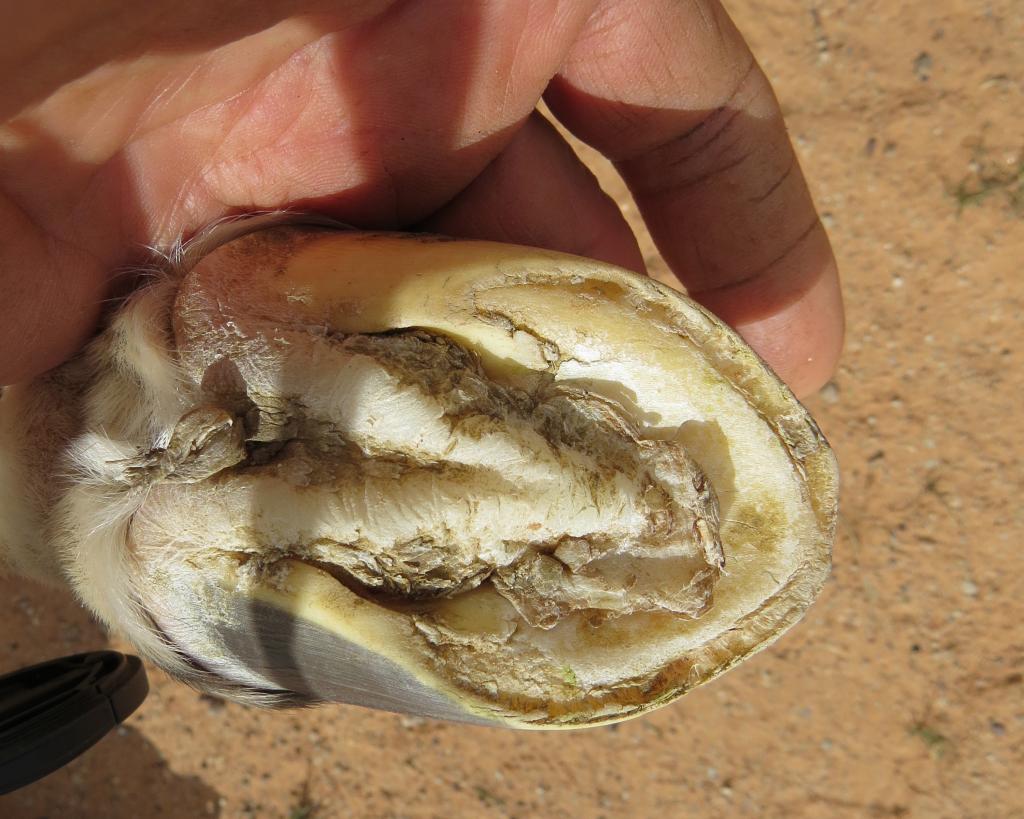
Very noticeable with a different foal , a few days old here, in the photo below, red arrow.

These pointed toes are very important for the locomotion of the foals and should always be left intact. Any rounding of to ‘help’ with a break over would be a disservice to the foal at this point in time. Foals do not round out and collect like grown up horses, they cannot move their hind quarters under their body. These pointed toes are a necessity for getting ground purchase and allowing the foals to balance their bodies, thus avoiding slipping and falling. Foals tippy toe a lot, their fetlocks are weak and the heels cannot get loaded yet. That is why foals seem to have heels that appear to be underrun and constricted. Time, hard surface turnout, proper movement and exercise will strengthen hooves, fetlocks and lower leg structures.
Within a few days, the foals are ready to explore more difficult terrain. These experiences are invaluable, they learn using their young bodies to balance and overcoming terrain challenges. They learn to read the terrain and to use judgment. First they follow their moms, later they explore on their own, just like children do.
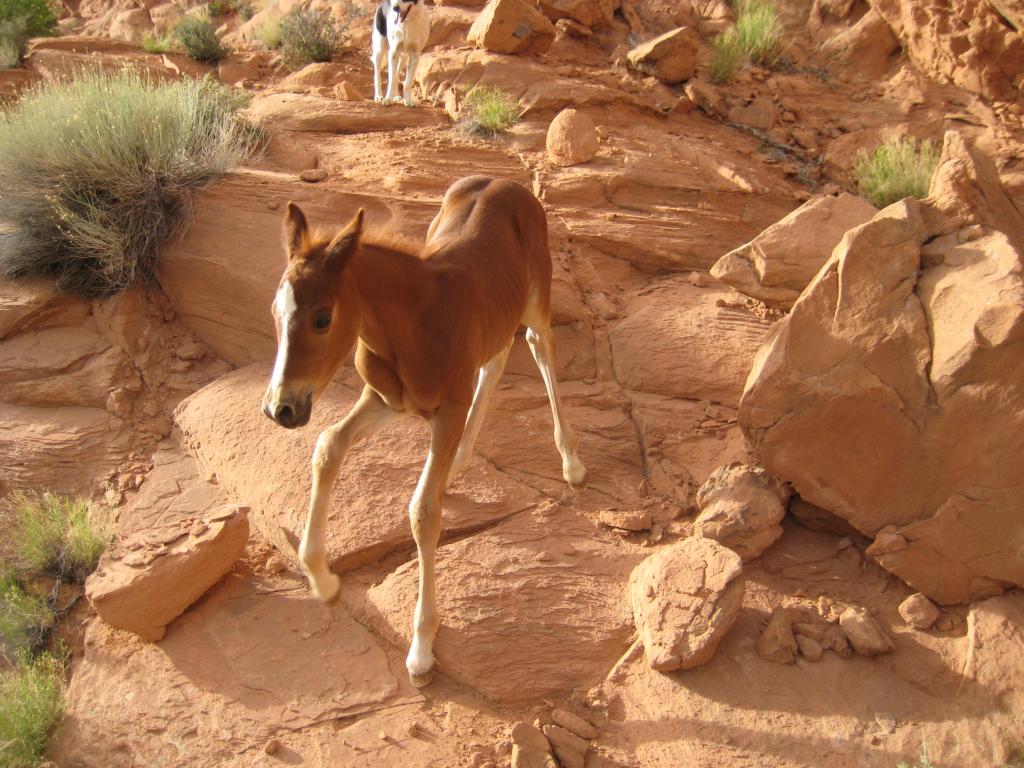
First little downhill.
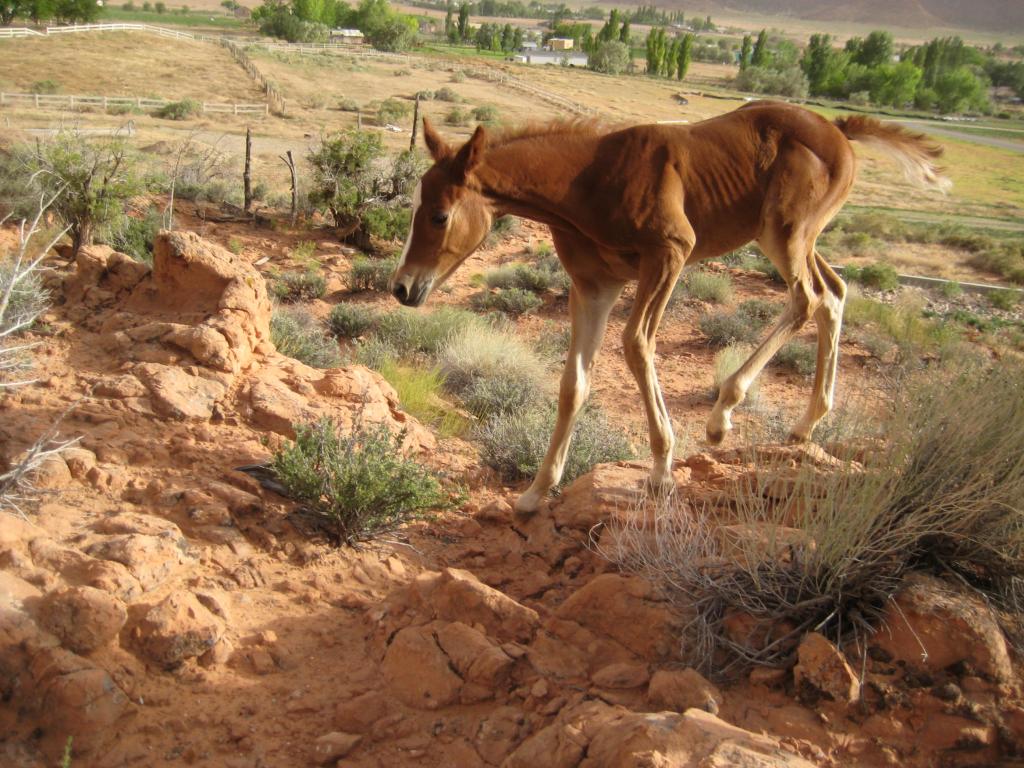
Cautiously and inquisitively moving through the rocks in the beginning.
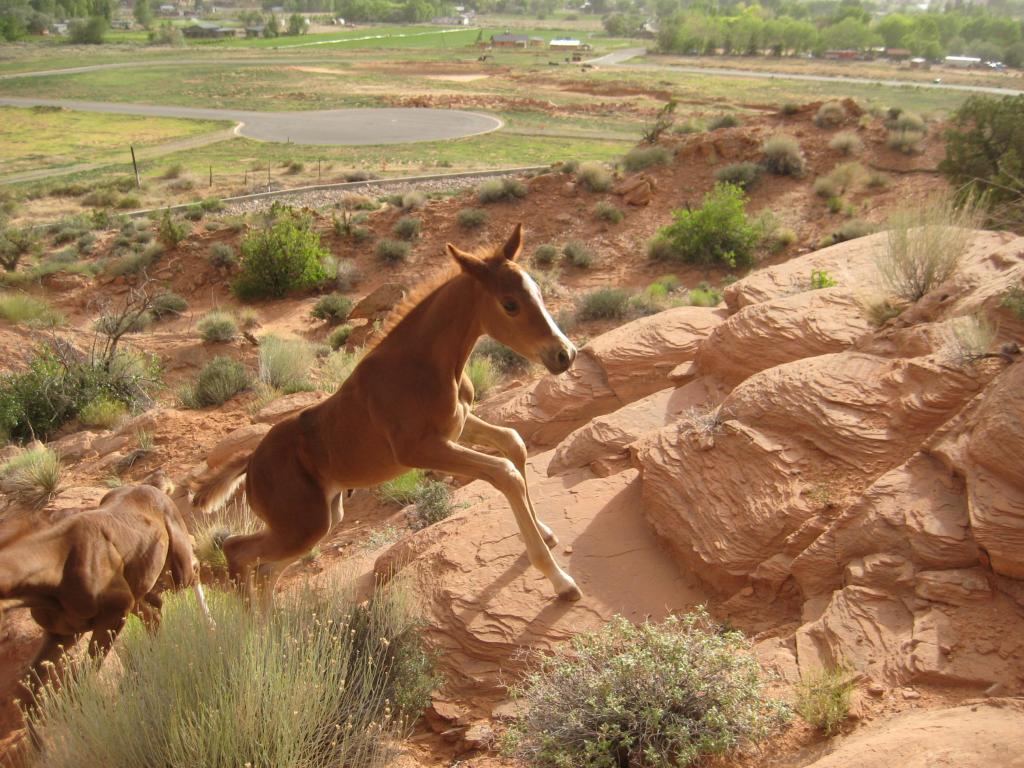
Nice how he handles this little step.
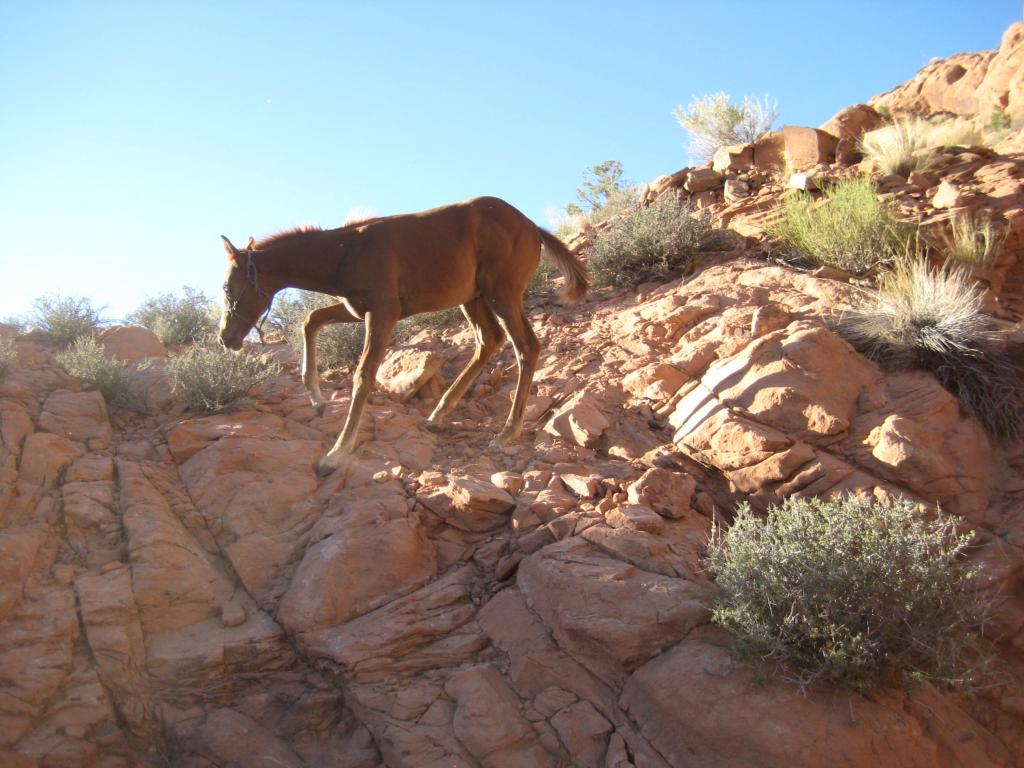
Can I continue here? Maybe not. The foal actually then stepped backwards, turned around and found an easier way down.
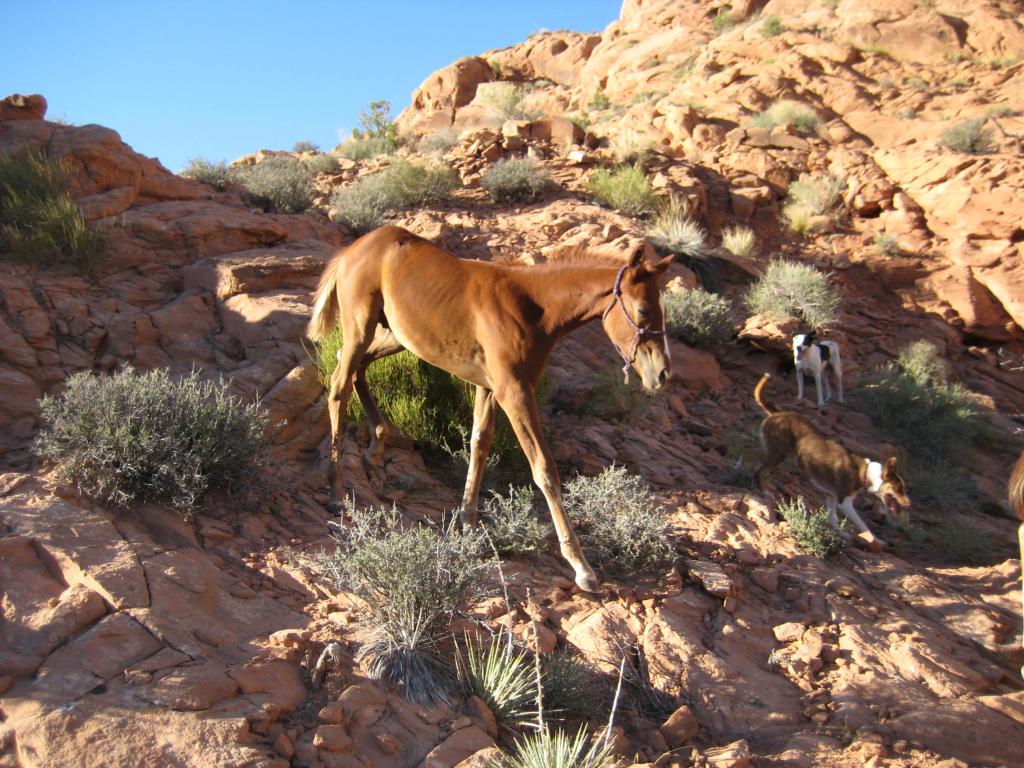
With more confidence is this little fellow moving through the rocks.
Allowing the babies to move freely and early develops and strengthens not only hooves, tendons and ligaments but also balances the body and mind. And they have fun doing it and so do we while taking them out and watching their progress on a daily basis. I call this fun time investment money in the bank. Later when the horse is being worked under saddle, terrain difficulties are a non issue for horses started that way.
From the desk of the Bootmeister
Christoph Schork, Global Endurance Training Center




